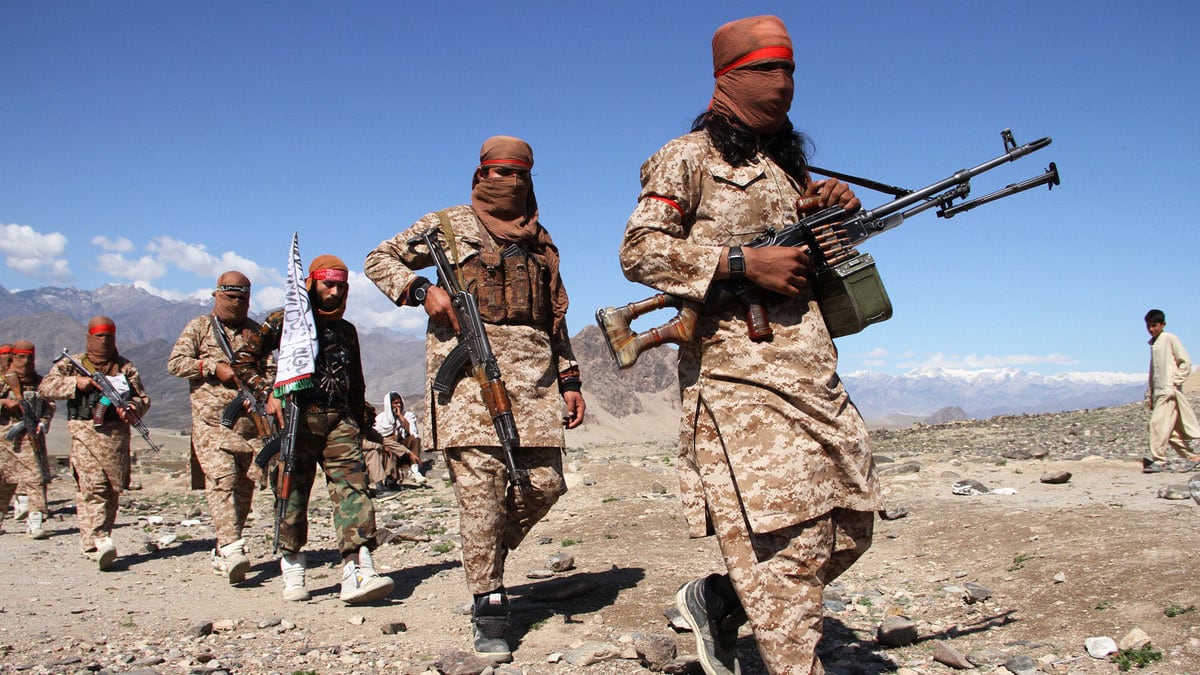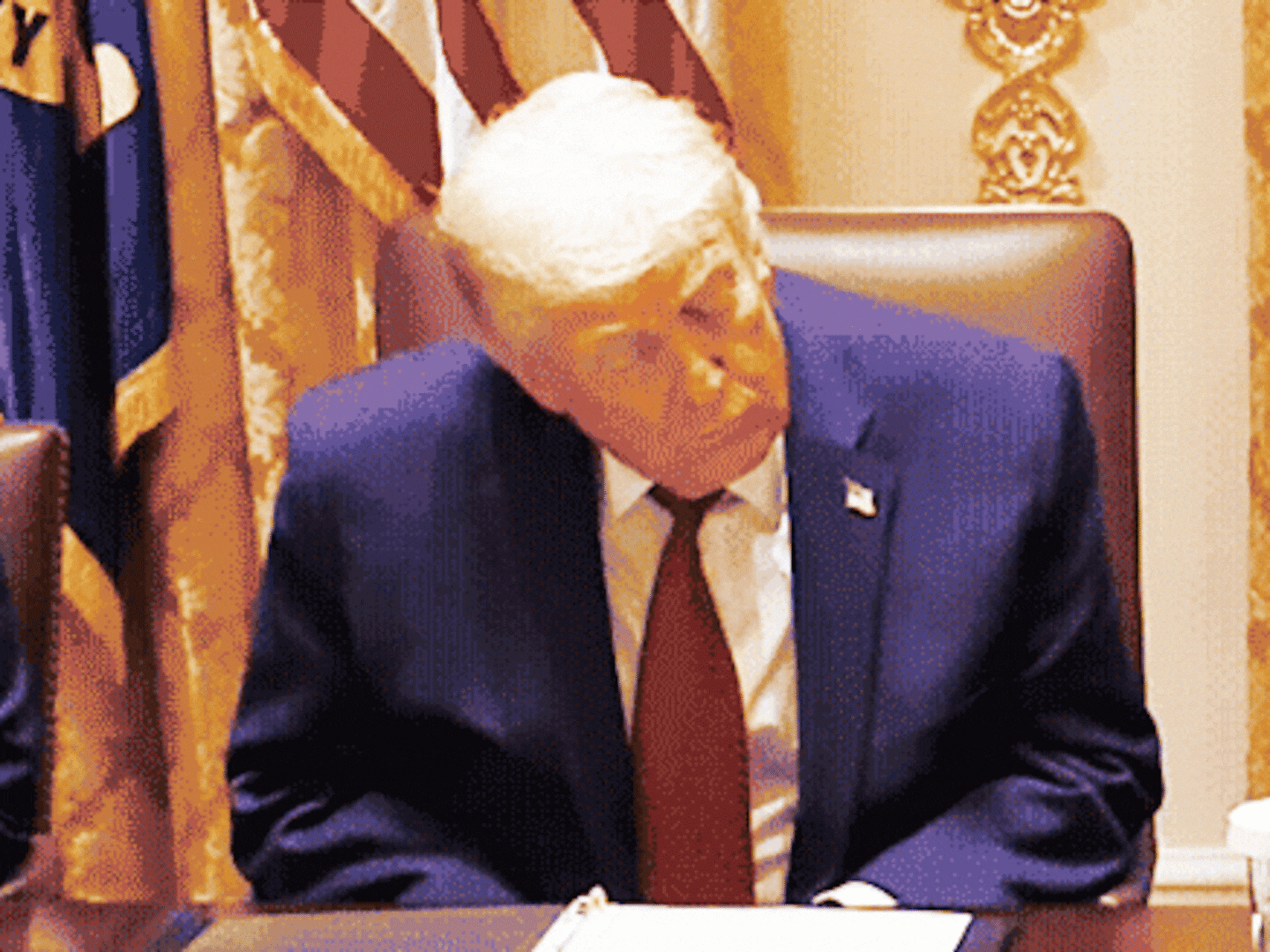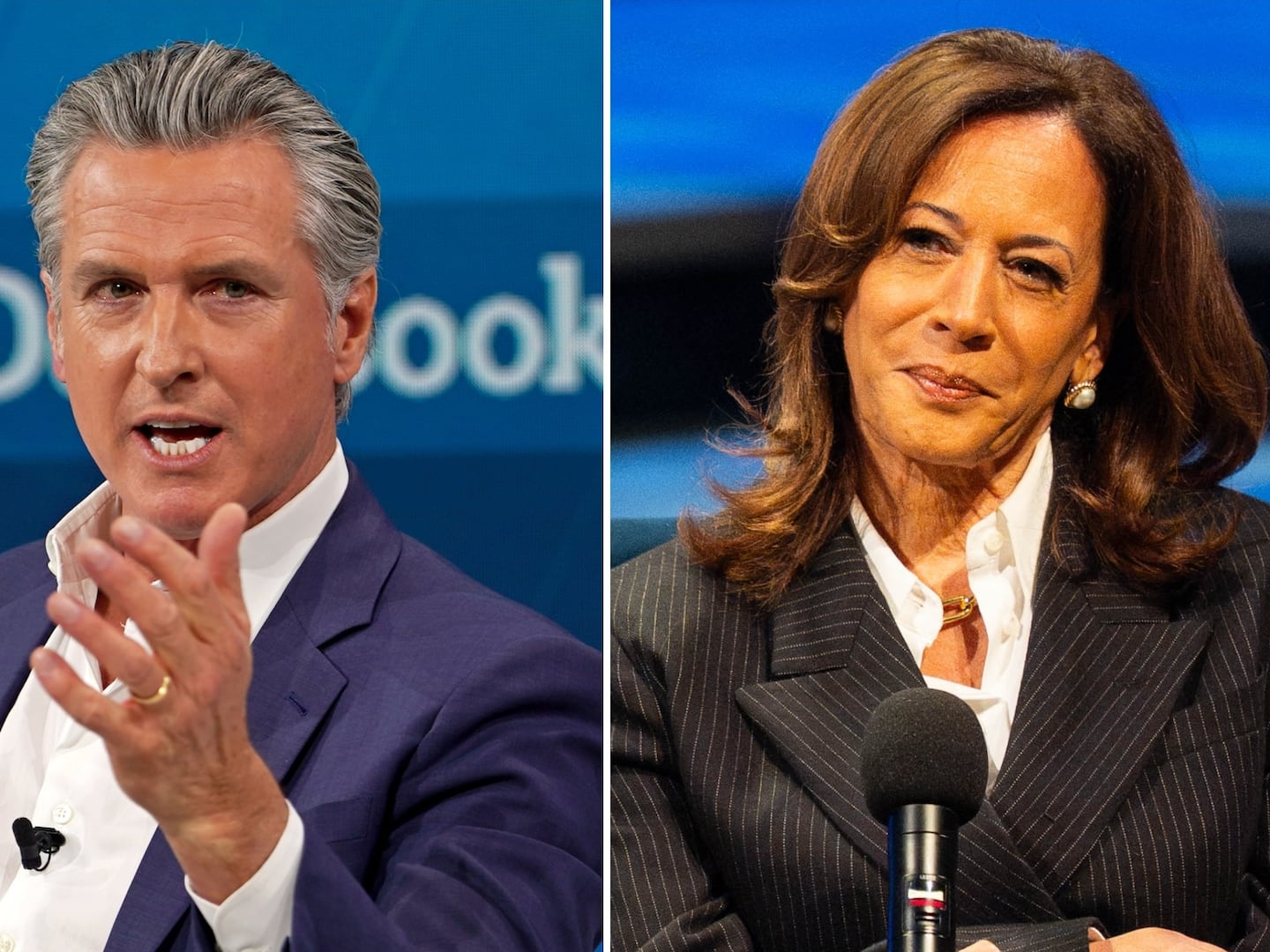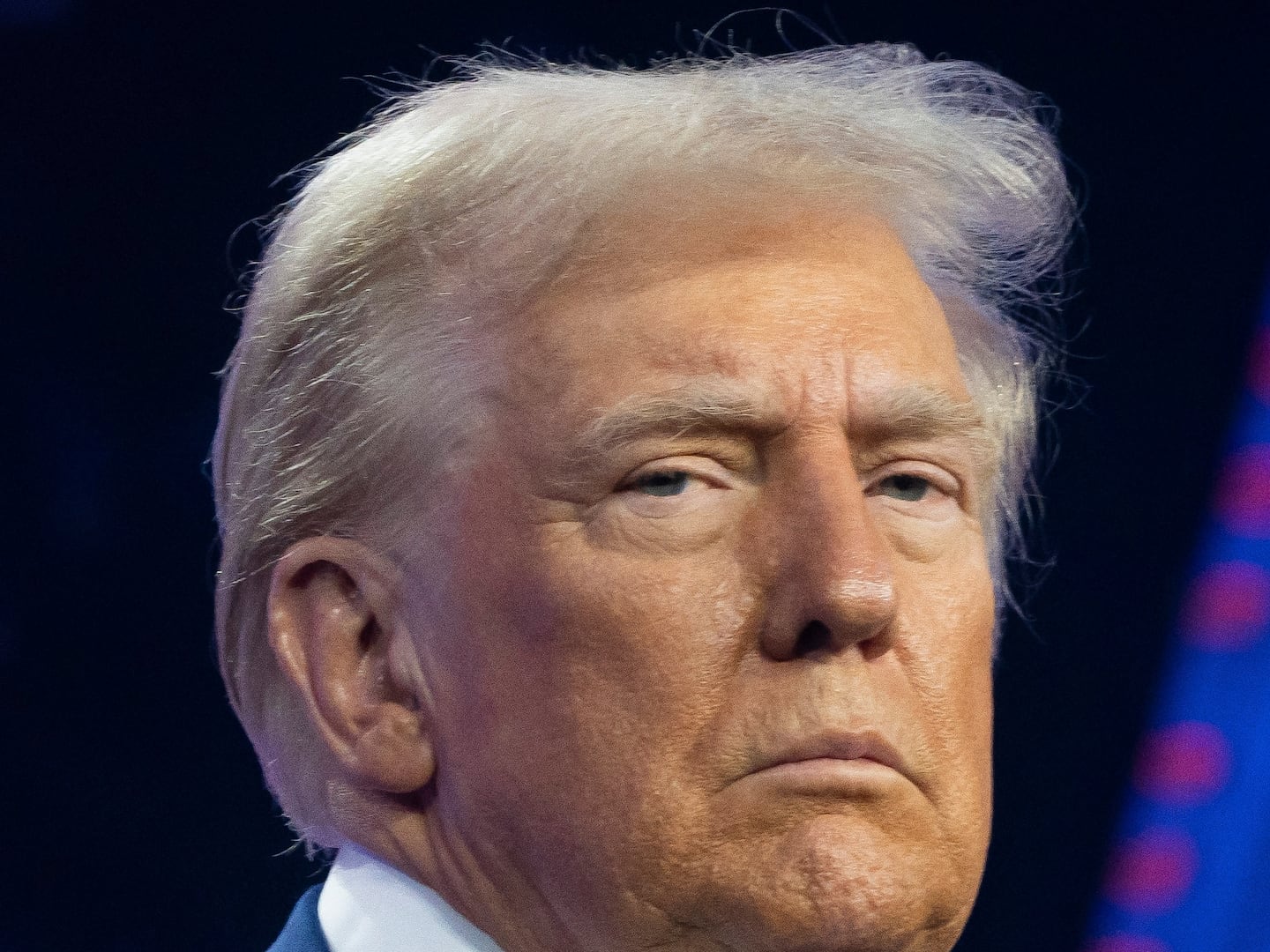Taliban veterans like to laugh about the first time, according to their lore, that the Russians dumped a lot of American dollars on them. During the Taliban campaign to take over all of Afghanistan in 1995, they actually had a few fighter planes, and they used one to force a Russian cargo plane—a huge Ilyushin Il-76TD flying for a company called Airstan—to land in Kandahar.
The Taliban held the Russian crew members prisoner for a year until, one day, they supposedly “escaped” and managed to take the plane with them. How many millions of dollars that took to arrange, the Taliban have never said, but after the long, bloody decade of the 1980s throwing off Soviet occupation, squeezing the Russians for money like that remains a source of amusement.
Mullah Manan Niazi, who was the spokesman for Taliban leader Mullah Omar in those days, brought up the incident when The Daily Beast asked him about reports that the Russians have offered—and perhaps paid—bounties to Taliban who kill American soldiers.
“The Russians paying U.S. dollars—it’s not odd for the Taliban,” he said, his voice fraught with irony over the encrypted phone call as he recalled the Airstan incident. As for the current situation, “The Taliban have been paid by Russian intelligence for attacks on U.S. forces—and on ISIS forces—in Afghanistan from 2014 up to the present.”
In the world of intelligence gathering, such a statement from such a figure would be worth noting, and just the kind of thing that could lead to what the Trump White House has called “inconclusive” reporting the Russian offer of bounties to kill Americans.
Mullah Manan Niazi was a very senior figure in the Taliban when they were in power, and also when they were driven into exile and underground after 2001. But since the death of Mullah Omar was made public in 2015, he has been a dissident and liable to be killed by the current Taliban leadership if it catches up with him. They have accused him of collaborating with the CIA and the Afghan government’s intelligence service, the National Directorate of Security (NDS), which he denies.
So, Niazi speaks as someone who knows the organization and its top people very well, but who also has an agenda very different from theirs, with his own reasons for confirming the bounty story, and he does not offer further specifics on that. But he does offer details about what he says are the longstanding ties between the Taliban and the Russians as well as the Iranians, and U.S. officials have been tracking those developments.
A U.S. intelligence report about Russian assistance to the Taliban has circulated on Capitol Hill and throughout the national security apparatus over the last several days. According to three individuals who have read or who are familiar with the report, the assessment is long and covers the span of several years, focusing generally on how Russia provides support, including financial assistance, to the Taliban. The report also touches on the Russian bounties first reported by The New York Times, though those who read the report say that data point is circumstantial and that the investigation is ongoing. Two individuals who spoke to The Daily Beast, though, said it is clear from the report that there’s an increased risk for U.S. troops in Afghanistan because of Russia’s behavior.
In important ways, this classified report mirrors an unclassified document produced last month by the Congressional Research Service which offered a crisp summation: “In the past two years, multiple U.S. commanders have warned of increased levels of assistance, and perhaps even material support for the Taliban from Russia and Iran, both of which cite IS [Islamic State, ISIS] presence in Afghanistan to justify their activities. Both nations were opposed to the Taliban government of the late 1990s, but reportedly see the Taliban as a useful point of leverage vis-a-vis the United States.”
“We introduced two Taliban to the Russians under cover as businessmen,” said Niazai looking back on operations when he was still part of the Taliban insurgent leadership. “They went to Tajikistan and Kyrgyzstan. With Russian-supplied funds, we purchased oil, wheat and flour and imported it to Afghanistan and then sold it there. That’s how we converted Russians funds to cash in Afghanistan.”
Both men, contacted by The Daily Beast, vehemently denied such activity. “I don’t want to comment—I don’t even want to talk about Niazi,” said one of them who, as a matter of fact, pays frequent visits to Moscow. “Niazi is our enemy and playing into the hands of the NDS.”
Other monies come through the hawala system, which originated in India and is used throughout South Asia and, now, in many other parts of the world. The U.S. treasury notes hawala is distinguished by “trust and the extensive use of connections such as family relationships or regional affiliations. Unlike traditional banking ... hawala makes minimal (often no) use of any sort of negotiable instrument. Transfers of money take place based on communications between members of a network of hawaladars, or hawala dealers.”
A senior Afghan security officer told The Daily Beast that he is “not aware of any Russians smuggling money,” but noted that the international Financial Action Task Force combating support for terrorism recently put pressure on the Afghan government to take “practical” action against suspect hawala dealers, “so the Afghan security forces raided some of the money changers.”
Many sources, including Mullah Manan Niazi, note the Russian and Iranian role supporting the Taliban in the fight against the so-called Islamic State in Khorasan (a.k.a. ISIS-K or ISIL-K).
Early on in the Trump administration, Gen. John Nicholson—then the commander of NATO’s Resolute Support Mission in Afghanistan—warned Congress that Russia “has become more assertive over the past year” in Afghanistan and was “overtly lending legitimacy to the Taliban to undermine NATO efforts and bolster belligerents using the false narrative that only the Taliban are fighting ISIL-K.”
Russia reportedly complemented its public rhetorical support for the Taliban with a covert supply program. The Washington Post reported that year that U.S. intelligence believed Russia had sent machine guns to the Taliban. An anonymous military source told the Post that the U.S. had found Russian-provided weapons areas where the group was waging war on coalition forces and ISIS’s Afghan affiliate had little presence.
“We've had weapons brought to this headquarters and given to us by Afghan leaders [who] said, ‘this was given by the Russians to the Taliban,’” Nicholson said in a 2018 BBC interview. “We know that the Russians are involved.”
Indeed. Various Taliban have told The Daily Beast they were quite proud of the guns they were given as gifts or rewards—whether for specific acts or simply to cement relationships—is unclear.
In 2018, Russia denied reports that it sent any arms but Russian special envoy Zamir Kabulov admitted that Moscow had established contacts with the Taliban because it was “seriously worried about possible terror threats for the Russian mission and Russian citizens in Afghanistan."
But in September 2019, Russia elevated its talks with the insurgents to a formal visit by a Taliban delegation in September.
According to a well-placed Taliban source, after some of the group’s representatives made a trip to Moscow they were given 30 state-of-the-art guns, apparently large caliber sniper rifles powerful enough to shoot through walls. “I personally saw three of them in Helmand,” said the source. “They were still full of grease,” which is to say brand new out of the box.
As military scholar David Kilcullen points out in his recent book The Dragons and the Snakes: How the Rest Learned to Fight the West, the U.S. obsession with its “global war on terror” after 9/11 created an opportunity for Russia and other hostile powers. They were “exploiting our exclusive focus on terrorism, seeking to fill the geopolitical, economic, and security vacuum we had left as we became bogged down in the wars of occupation in Iraq and Afghanistan.”
In the present day, it serves Russia’s interests to keep the United States bogged down there, despite official Russian statements to the contrary.
What others call “hybrid warfare” Kilcullen defines somewhat differently as exploitation of situations in flux, which certainly is the case in Afghanistan with a U.S. president determined to declare he’s made a complete exit, even though there are only 8,600 U.S. troops left on the ground at the moment.
“Things that are in limbo, transitioning, or on the periphery, that have ambiguous political, legal, and psychological status—or whose very existence is debated—are liminal,” write Kilcullen. “Liminal warfare exploits this character of ambiguity, operating in the blur, or as some Western military organizations put it, the ‘gray zone.’”
That, precisely, is where the Russians have learned to thrive.
—with additional reporting by Sam Brodey










